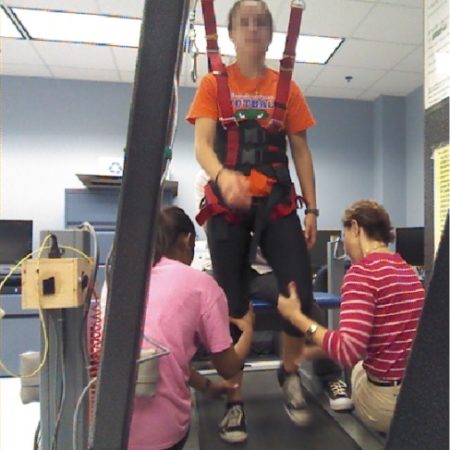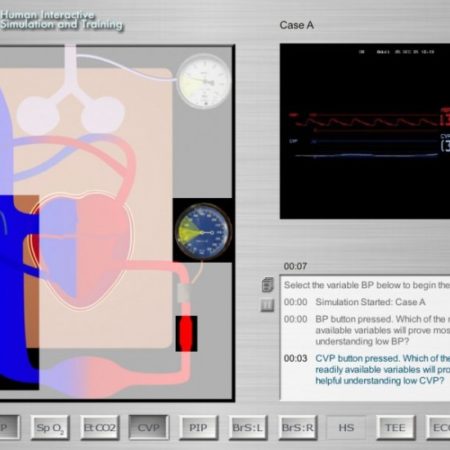Neuroprosthetic Training System
More than 2 million individuals in the U.S. suffer from a wide variety of neurological disorders that include spinal cord injury and diseases of the peripheral nervous system. New technologies called Brain-Machine Interfaces (BMI) offer an alternative means of communication and control that can bypass affected pathways of motor function through a direct interface with the brain. The science developed in this project will lead to a Neuroprosthetic Training System (NETS), improving recovery by retraining the nervous system to improve motor function and reduce secondary conditions that impair physical or cognitive function.
Description
Neuroprosthetic Training System
We are taking a multidisciplinary approach that combines existing and emerging techniques and technologies from Virtual Reality (VR) with Brain-Machine Interfaces to develop Virtual World Environments (VWE) as a training medium to enhance task improvement, stimulate new brain function, and provide a seamless learning transfer from a VR to a real environment. The science developed in this project will lead to a Neuroprosthetic Training System (NETS) that uses Virtual Reality to Treat Paralysis. To create this novel neuroprosthetic rehabilitation system, this project assembles a multidisciplinary team and environment in 4 areas: interactive digital media, biomedical engineering, neuroscience, and rehabilitation.
PI: James C. Oliverio, Professor of Digital Media; Director, Digital Worlds Institute
Co-PI: Justin C. Sanchez Assistant Professor of Pediatrics, Neuroscience, Biomedical Engineering
Co-PI: Jose C. Principe Distinguished Professor of Electrical and Biomedical Engineering
Co-PI: Jill Sonke-Henderson, Director, Center for the Arts in Healthcare; Research Director OTRI
Abstract from funded NETS Project Proposal
More than 2 million individuals in the U.S. suffer from a wide variety of neurological disorders that include spinal cord injury and diseases of the peripheral nervous system. While the symptoms and causes of these disabilities are diverse, there are at least two common characteristics in many of these neurological conditions: functioning of the brain remains intact, and the condition has a profoundly negative effect on the patient’s quality of life. New technologies called Brain-Machine Interfaces (BMI) offer an alternative means of communication and control that can bypass affected pathways of motor function through a direct interface with the brain. Many studies in animals and humans have shown the feasibility of closed-loop neural control, which allow the patient to use their “thoughts” to control prosthetic devices; however, they are often tested in specialized laboratory environments that do not translate well to the real world. While functional proof-of-concept has been shown, the impact of BMI in the area of rehabilitation has yet to be realized because they have not been studied in the most appropriate environments where sensory and motor actions can be used to enhance performance. Without a realistic and highly instrumented environment to train the user of the BMI, it is not possible to provide real-time performance feedback in the activities of daily life, graduated exposure to new context specific stimuli, augmented attention, or stimulating motivation for the user. The development of a new more appropriate environmental context for BMI could revolutionize rehabilitation by providing innovative ways to elicit new brain function that restores meaningful motor ability to disabled patients.
To overcome the noted challenges, we propose a multidisciplinary approach that combines existing and emerging techniques and technologies from Virtual Reality (VR) with Brain-Machine Interfaces to develop Virtual World Environments (VWE) as a training medium to enhance task improvement, stimulate new brain function, and provide a seamless learning transfer from a VR to a real environment. The science developed in this project will lead to a Neuroprosthetic Training System (NETS) that uses Virtual Reality to Treat Paralysis. NETS would improve recovery by retraining the nervous system to improve motor function and reduce secondary conditions that impair physical or cognitive function. This program of research is enabled through Interactive Digital Media (IDM) coupled with a neuroprosthetic device that operates in real-time and is deployed through direct interaction with the brain. To create this novel neuroprosthetic rehabilitation system, this project assembles a multidisciplinary team in 3 research areas: interactive digital media, biomedical engineering, and neuroscience. This project builds upon the complimentary skillsets of the investigators to create a new and highly interdisciplinary collaborative partnership.
Through the formation of the Neuroprosthesis Program and Workshop in the past eleven years, the National Institutes of Health (NIH) National Institute of Neurological Disorders and Stroke (NINDS) has identified neuroprosthetic rehabilitation as a potential emergent area that is likely to impact the future of rehabilitation. Other significant sources of continued funding include the NSF, the DoD, the NIH, the Veterans Administration, as well as the prosthetics industry and medical technologies industries at large.
In summary, the impact of BMI in the area of rehabilitation has yet to be realized because they have not been studied in the most appropriate environments where sensory and motor actions can be used to enhance performance: Virtual World Environments. Without a rich interactive environment, the time needed to learn to control can be long and the level of mastery of function can be diminished. The development of the NETS rehabilitation system to reduce the time that it takes for a user to reach a specified performance level would be profoundly enabling to the millions of patients worldwide who currently suffer from spinal cord injury and diseases of the peripheral nervous system.



